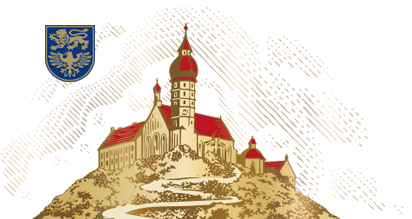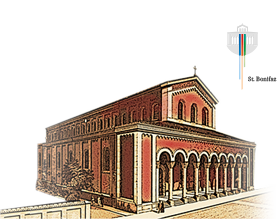Dreihostienfest
The Dreihostienfest (Festival of the Three Hosts) is an integral element of the Andechs pilgrimage. It is held on the day of the church consecration festival, the last Sunday in September. After the festival service, the Monstrance of the Three Hosts is carried around the mountain in a ceremonial procession.
The three Sacred Hosts were brought to the Andechs castle from Rome via Bamberg in the 12th century. After the Andechs castle was destroyed, they were considered lost for decades. Their rediscovery in 1388 created a sensation and revived the Andechs pilgrimage, which traces it beginnings back to the 11th century.
The papal legate Cardinal Nicholas of Cusa endorsed the pilgrimage in the mid-15th century and recommended its continuance. In the course of the pilgrimage’s revival, Duke Ernst of Bavaria ordered the construction of the Andechs Pilgrimage Church at the beginning of the 15th century. The Benedictine monastery was founded by his son, Duke Albrecht III, in 1455.
Andechs – original pilgrimage of Christ
The three Sacred Hosts are the centrepiece of the Andechs relics. Two hosts are said to originate from Pope Gregory the Great (6th century), respectively depicting a blood-coloured cross and phalanx. The third with the monogram of Jesus in blood is said to come from Pope Leo IX (11th century).
During the Dreihostienfest, Andechs comes into its own as an original pilgrimage of Christ. Jesus Christ, present in bread and wine, is worshipped here. The Andechs Dreihostienfest is a reminder that Jesus Christ lives through his church and brings people together in faith. Thus the Dreihostienfest also represents the people’s pilgrimage, as described by Isaiah (Isaiah 25, 6-10). God himself invites us to the feast on his holy mountain.







